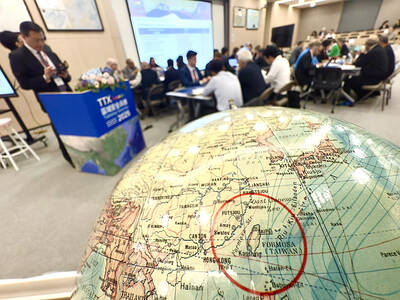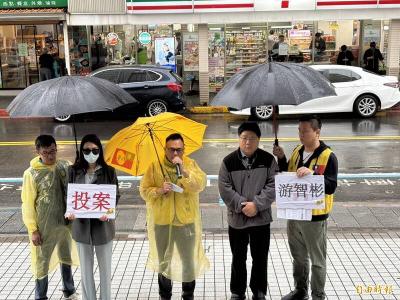The explanations provided by Chunghwa Telecom (CHT) for its decision not to renew the contract of Falun Gong-sponsored New Tang Dynasty Television (NTDTV) contradict information uncovered by the Taipei Times and raise questions about possible pressure from the Chinese or Taiwanese authorities.
Since 1998, CHT has relied on the ST-1 satellite to transmit TV signals to Taiwanese subscribers. With the satellite scheduled to cease operations in August, on Sept. 18, 2008, Chunghwa Telecom Singapore, a fully owned subsidiary of CHT, formed a joint venture with Singapore Telecommunications Ltd (SingTel) to build a new satellite, the ST-2. Information released by CHT showed that its subsidiary would take about a 38 percent stake in the joint venture, with SingTel taking the remaining 62 percent. CHT and SingTel also jointly operate ST-1.
In a press release dated April 5, SingTel announced that the assembly, integration and testing of ST-2 had been completed and that the satellite was being shipped to its launching site, where it is to be launched in the middle of this month.
Responding to criticism over the decision not to renew NTDTV’s contract, meaning its broadcasts will cease in August, CHT said the ST-2 had fewer transponders and therefore had lower bandwidth to ensure a quality service.
Industry sources said ST-1 carries 16 high-power Ku-band transponders and 14 medium-power C-band transponders.
However, CHT’s explanation contradicts what its partner said on April 5.
Bill Chang, executive vice president of the business group at SingTel, said at the time: “With 20 percent more transponder capacity and a wider coverage footprint than ST-1, ST-2 will help increase our capacity to meet growing customer demand for fixed and mobile satellite services in the broadcast, maritime and oil and gas industries.”
A Singaporean source confirmed to the Taipei Times yesterday that while ST-2 has more transponders, CHT’s share in the satellite has shrunk, meaning it may have been allocated less bandwidth than on ST-1.
Although this could explain why CHT will be unable to assign as many stations as it did before, it does not explain the decision to specifically select NTDTV to be dropped.
One possible explanation could be the stronger signal offered by ST-2. Both CHT and SingTel have said ST-2 will have higher transmitting power than ST-1. The wide-ranging footprint of C-band and Ku-band coverage will cover the Middle East, Central Asia, the Indian subcontinent and Southeast Asia.
“ST-2 is almost twice as powerful as our first satellite, which means our customers’ antennas don’t have to work as hard to pick up the signals,” Chang said.
Those comments may have caught Beijing’s attention.
Beijing considers Falun Gong a cult and has made it an illegal entity in China. It has successfully blocked — and sometimes intimidated other countries into doing so — broadcasts from NTDTV.
Although satellites like ST-1 and ST-2 do not service the Chinese market, a technique known as “signal hacking” reportedly allows direct access to channels and programs on any satellite that services the Asia-Pacific region.
In October 2009, Taiwanese lawmakers called for an investigation into ST-1 signal interruptions that began on Sept. 17 and peaked on Oct. 1, when the People’s Republic of China was celebrating its 60th anniversary. On Double Ten Day, NTDTV’s broadcasts were effectively taken off the air for the entire day.
ST-1’s low-band frequency covers all of Taiwan and 80 percent of China. The higher transmitting power of ST-2 could ostensibly make it more difficult for China to jam its signals, as it did in the lead-up to the 60th anniversary celebrations.
Although the Taipei Times could not confirm this information, Beijing may have pressured CHT or SingTel not to renew NTDTV’s contract.
Earlier this week, CHT denied there was any political reason behind its decision.
The incident occurs at a time when CHT is seeking to expand its operations in China. On March 28, the company announced the establishment of a wholly owned subsidiary, Chunghwa Telecom (China), in Shanghai, to promote its information and communications technology. This includes CHT’s intelligent energy-saving solutions iEN, which will be initially promoted in Fujian Province through cooperation with a provincial branch of state-owned China Mobile. CHT has also made a number of investments and joint ventures in China and is in negotiations with state-owned China Telecom Corp to enter the Chinese market.
ST-2 departed Kamakura, Japan, at the end of March and arrived in French Guiana on an Antonov An-124 cargo aircraft on April 5, Mitsubishi Electric Corp of Japan, the manufacturer of the satellite, said in a press release on April 6.
Industry watchers said ST-2 is to be launched at the Guiana Space Center in Kourou on an Ariane 5 orbital launch vehicle.
The satellite, which has an expected 15-year lifespan, will be in orbit at 88 degrees east longitude, Mitsubishi Electric said.
Contacted for further comment, Mitsubishi Electric said it could not provide specific details about ST-2, stating a non-disclosure agreement with its customer.
According to the CHT Web site, the Ministry of Transportation and Communications owns 35.41 percent of its shares.

DEFENSE: The National Security Bureau promised to expand communication and intelligence cooperation with global partners and enhance its strategic analytical skills China has not only increased military exercises and “gray zone” tactics against Taiwan this year, but also continues to recruit military personnel for espionage, the National Security Bureau (NSB) said yesterday in a report to the Legislative Yuan. The bureau submitted the report ahead of NSB Director-General Tsai Ming-yen’s (蔡明彥) appearance before the Foreign and National Defense Committee today. Last year, the Chinese People’s Liberation Army (PLA) conducted “Joint Sword-2024A and B” military exercises targeting Taiwan and carried out 40 combat readiness patrols, the bureau said. In addition, Chinese military aircraft entered Taiwan’s airspace 3,070 times last year, up about

A magnitude 4.3 earthquake struck eastern Taiwan's Hualien County at 8:31am today, according to the Central Weather Administration (CWA). The epicenter of the temblor was located in Hualien County, about 70.3 kilometers south southwest of Hualien County Hall, at a depth of 23.2km, according to the administration. There were no immediate reports of damage resulting from the quake. The earthquake's intensity, which gauges the actual effect of a temblor, was highest in Taitung County, where it measured 3 on Taiwan's 7-tier intensity scale. The quake also measured an intensity of 2 in Hualien and Nantou counties, the CWA said.

The Overseas Community Affairs Council (OCAC) yesterday announced a fundraising campaign to support survivors of the magnitude 7.7 earthquake that struck Myanmar on March 28, with two prayer events scheduled in Taipei and Taichung later this week. “While initial rescue operations have concluded [in Myanmar], many survivors are now facing increasingly difficult living conditions,” OCAC Minister Hsu Chia-ching (徐佳青) told a news conference in Taipei. The fundraising campaign, which runs through May 31, is focused on supporting the reconstruction of damaged overseas compatriot schools, assisting students from Myanmar in Taiwan, and providing essential items, such as drinking water, food and medical supplies,

New Party Deputy Secretary-General You Chih-pin (游智彬) this morning went to the National Immigration Agency (NIA) to “turn himself in” after being notified that he had failed to provide proof of having renounced his Chinese household registration. He was one of more than 10,000 naturalized Taiwanese citizens from China who were informed by the NIA that their Taiwanese citizenship might be revoked if they fail to provide the proof in three months, people familiar with the matter said. You said he has proof that he had renounced his Chinese household registration and demanded the NIA provide proof that he still had Chinese